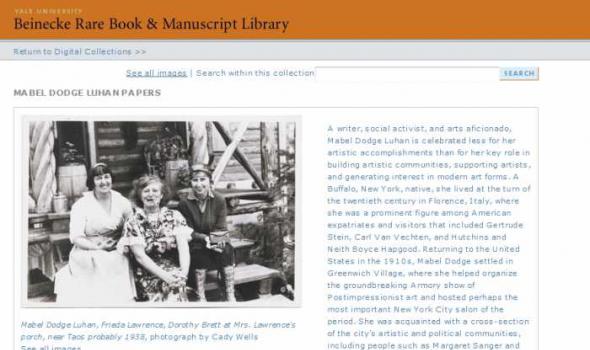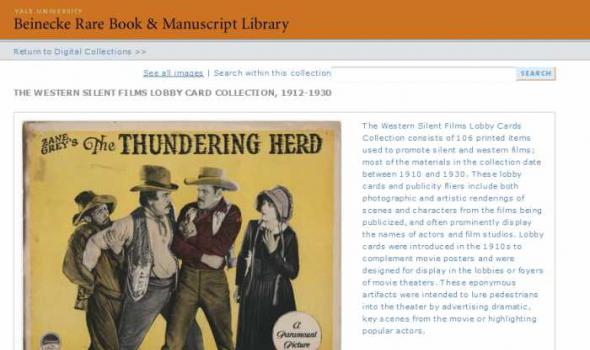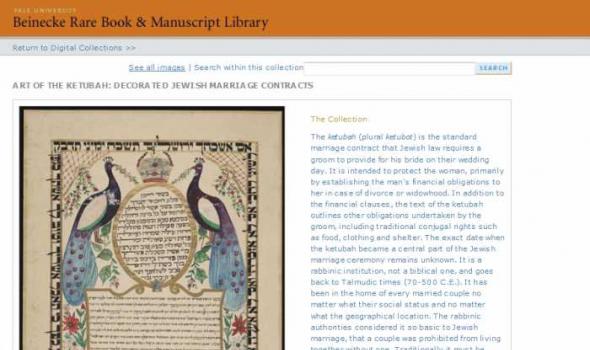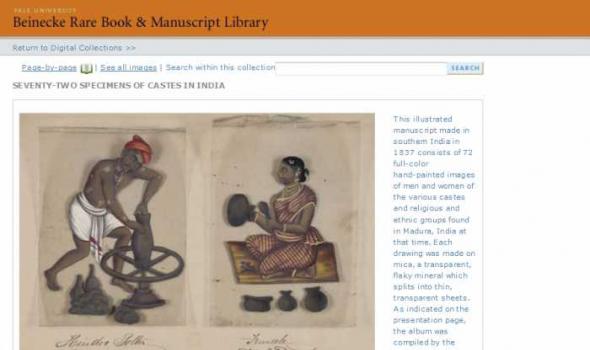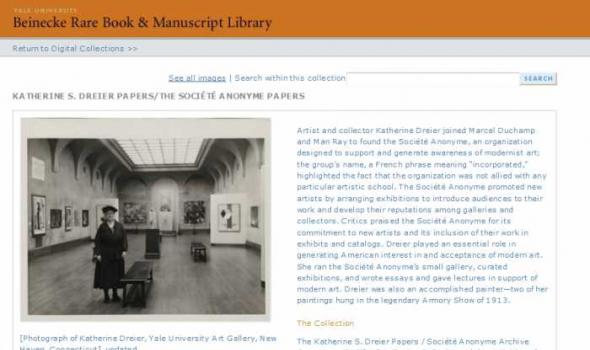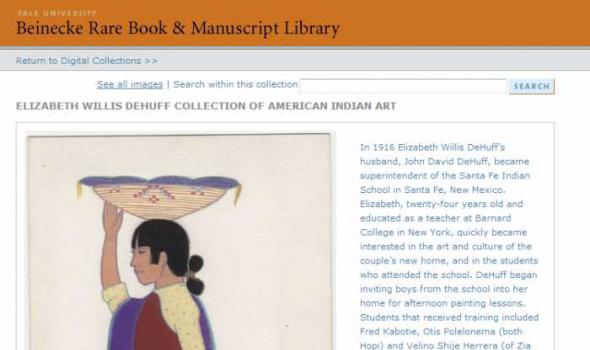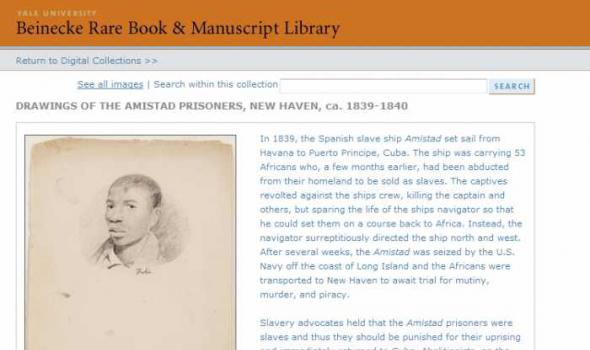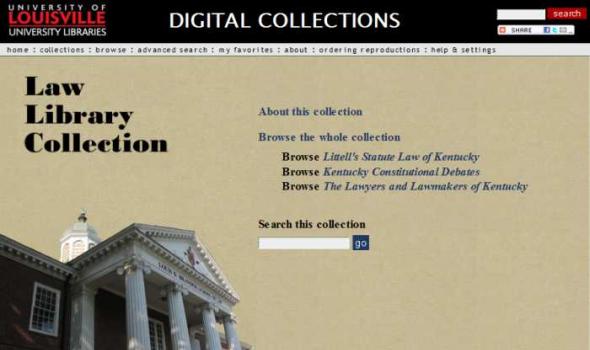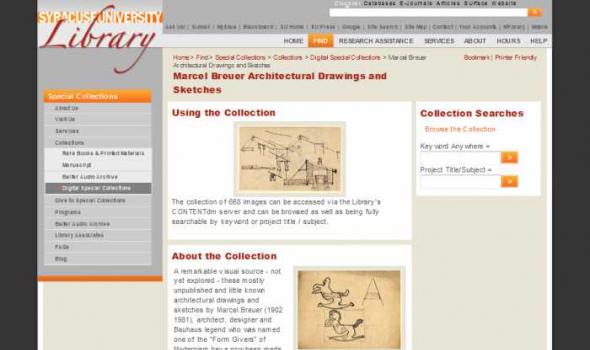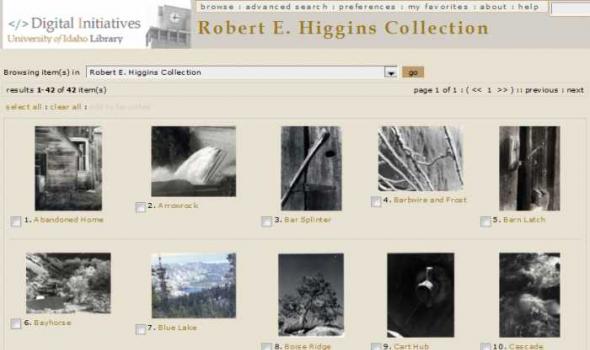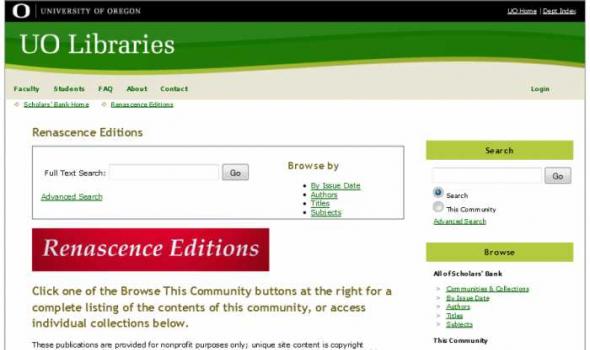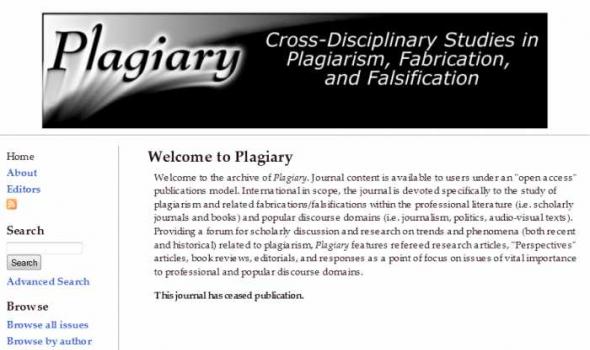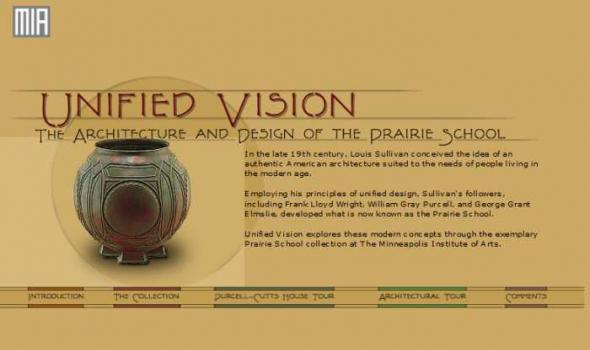Category: Fine Arts, Yale University
Results
A writer, social activist, and arts aficionado, Mabel Dodge Luhan is celebrated less for her artistic accomplishments than for her key role in building artistic communities, supporting artists, and generating interest in modern art forms. A Buffalo, New York, native, she lived at the turn of the twentieth century in Florence, Italy, where she was a prominent figure among American expatriates and visitors that included Gertrude Stein, Carl Van Vechten, and Hutchins and Neith Boyce Hapgood. Returning to the United States in the 1910s, Mabel Dodge settled in Greenwich Village, where she helped organize the groundbreaking Armory show of Postimpressionist art and hosted perhaps the most important New York City salon of the period.
The collection consists of 105 items (86 lobby cards and 19 printed fliers) promoting sixty-eight films. Cite as: Western Silent Films Lobby Card Collection. Yale Collection of Western Americana, Beinecke Rare Book and Manuscript Library, Yale University Call Number: WA MSS S-2553
Ketubah, marriage contract, manuscript, ink and paint on paper, 20th of Menahem 5671 [1911 August 14], Bombay, India The ketubah (plural ketubot ) is the standard marriage contract that Jewish law requires a groom to provide for his bride on their wedding day. It is intended to protect the woman, primarily by establishing the man's financial obligations to her in case of divorce or widowhood. In addition to the financial clauses, the text of the ketubah outlines other obligations undertaken by the groom, including traditional conjugal rights such as food, clothing and shelter. The exact date when the ketubah became a central part of the Jewish marriage ceremony remains unknown. It is a rabbinic institution, not a biblical one, and goes back to Talmudic times (70-500 C.E.).
The Collection Just under 300 engravings, watercolors, and illustrations drawn from books, archival collections, and artwork from the Beinecke Library's Western Americana and General collections. Cite as: Beinecke Rare Book and Manuscript Library, Yale University
This illustrated manuscript made in southern India in 1837 consists of 72 full-color hand-painted images of men and women of the various castes and religious and ethnic groups found in Madura, India at that time. Each drawing was made on mica, a transparent, flaky mineral which splits into thin, transparent sheets. As indicated on the presentation page, the album was compiled by the Indian writing master at an English school established by American missionaries in Madura, and given to the Reverend William Twining. The manuscript shows Indian dress and jewelry adornment in the Madura region as they appeared before the onset of Western influences on South Asian dress and style.
Katherine S. Dreier Papers / Société Anonyme Archive Artist and collector Katherine Dreier joined Marcel Duchamp and Man Ray to found the Société Anonyme, an organization designed to support and generate awareness of modernist art; the group’s name, a French phrase meaning “incorporated,” highlighted the fact that the organization was not allied with any particular artistic school. The Société Anonyme promoted new artists by arranging exhibitions to introduce audiences to their work and develop their reputations among galleries and collectors. Critics praised the Société Anonyme for its commitment to new artists and its inclusion of their work in exhibits and catalogs. Dreier played an essential role in generating American interest in and acceptance of modern art.
In 1916 Elizabeth Willis DeHuff’s husband, John David DeHuff, became superintendent of the Santa Fe Indian School in Santa Fe, New Mexico. Elizabeth, twenty-four years old and educated as a teacher at Barnard College in New York, quickly became interested in the art and culture of the couple’s new home, and in the students who attended the school. DeHuff began inviting boys from the school into her home for afternoon painting lessons. Students that received training included Fred Kabotie, Otis Polelonema (both Hopi) and Velino Shije Herrera (of Zia Pueblo).
New Haven resident William H. Townsend made pen-and-ink sketches of the Amistad captives while they were awaiting trial. Twenty-two of these drawings were given to Yale in 1934 by Asa G. Dickerman, whose grandmother was the artist's cousin. Townsend, who was about 18 years old when he made the drawings, is buried in the Grove Street Cemetery in New Haven, Connecticut, beside the Yale University campus. Call Number: GEN MSS 335
